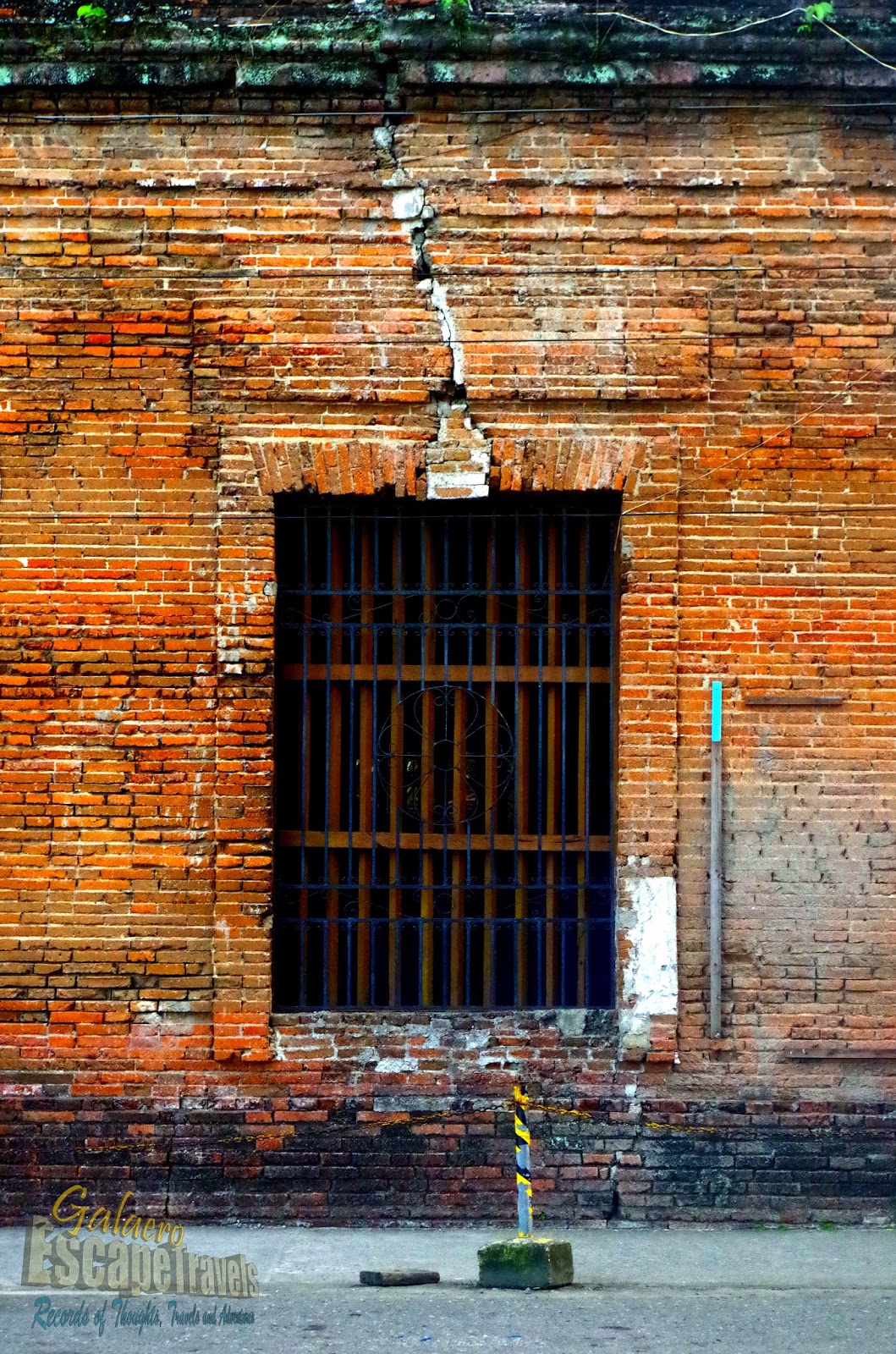CABATUAN, Iloilo -- The Town of Cabatuan was the last town I visited when I had my Iloilo Tour along with Sir Estan Cabigas of Langyaw. It was already dusk and the sun have set already when we reached the town. This sleepy town turns into a gathering place specially the plaza area in front of the church as I saw bunch of locals around. My priority was to visit the town for its colossal church which never failed to amazed me at the moment I glanced on it. It is indeed massive especially the symmetrical bell towers that was clad by red bricks.
The two bell towers were just so huge that made the main church facade not proportion on those towering structure. The main facade is also the only part of the structure that has no bricks. Perhaps, I thought the bricked portion was just latter additions and the Tuscan pilaster church facade with triangular pediment was the original. (I just concluded)
It was weekday (monday actually) when we went there and the reason why we weren't able to go inside. However, seeing it just from the outside was enough for us as an old churches enthusiast. Overall, the church remains and absolutely a heritage object to protect, preserve and to be kept for the future generation. Morever, the Cabatuanon must do their part on conserving it together with other heritage site like the the Cabatuan Spanish Cemetery that we visited right after we witness the town's church.
How to get there
From Iloilo City, to reach the town of Janiuay, one has to take jeepneys that are available in Centraline Terminal fronting Christ the King Memorial Park in Jaro District of Iloilo City. You have have an option of riding air-conditioned vans that are also available in the terminal.
Facts
Cabatuan Church was built in 1834 which was dedicated to San Nicolas de Tolentino. An Agustinian priest in the name of Rev. Fr. Ramon Alquizar who led the construction of the church.
It is the only church in Iloilo which once had three bell towers and three facades however was destroyed in 1948 destructive earthquake that hit the town. A Tuscan style was prevalent in spite of touch of Baroque and Romanesque style.
The nearby Sta. Barbara Church has something resemblance in this church as its bell towers have Moorish styles plus the Agustinian elements present on it.




No comments:
Post a Comment